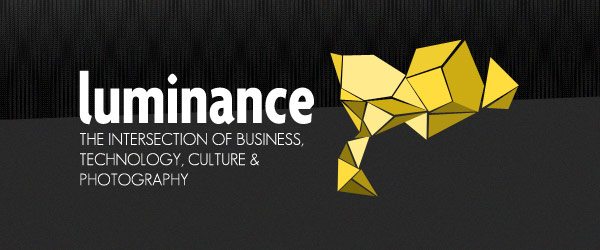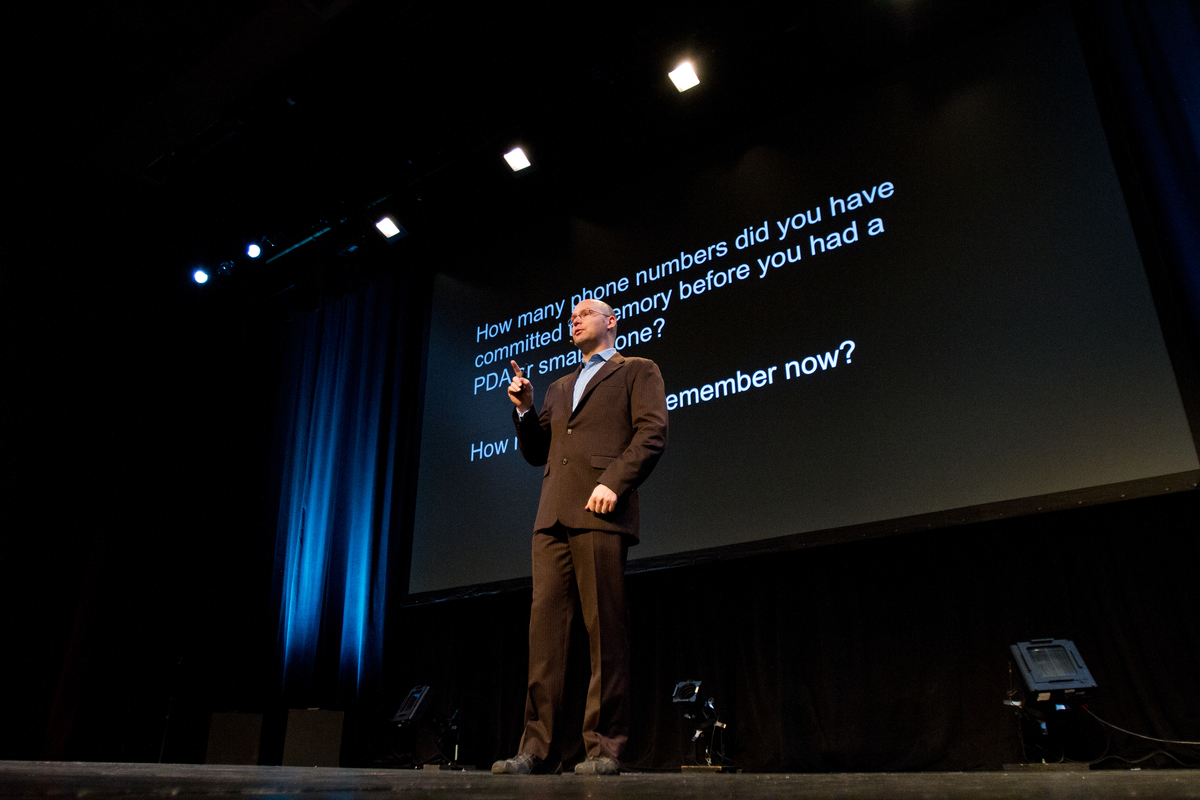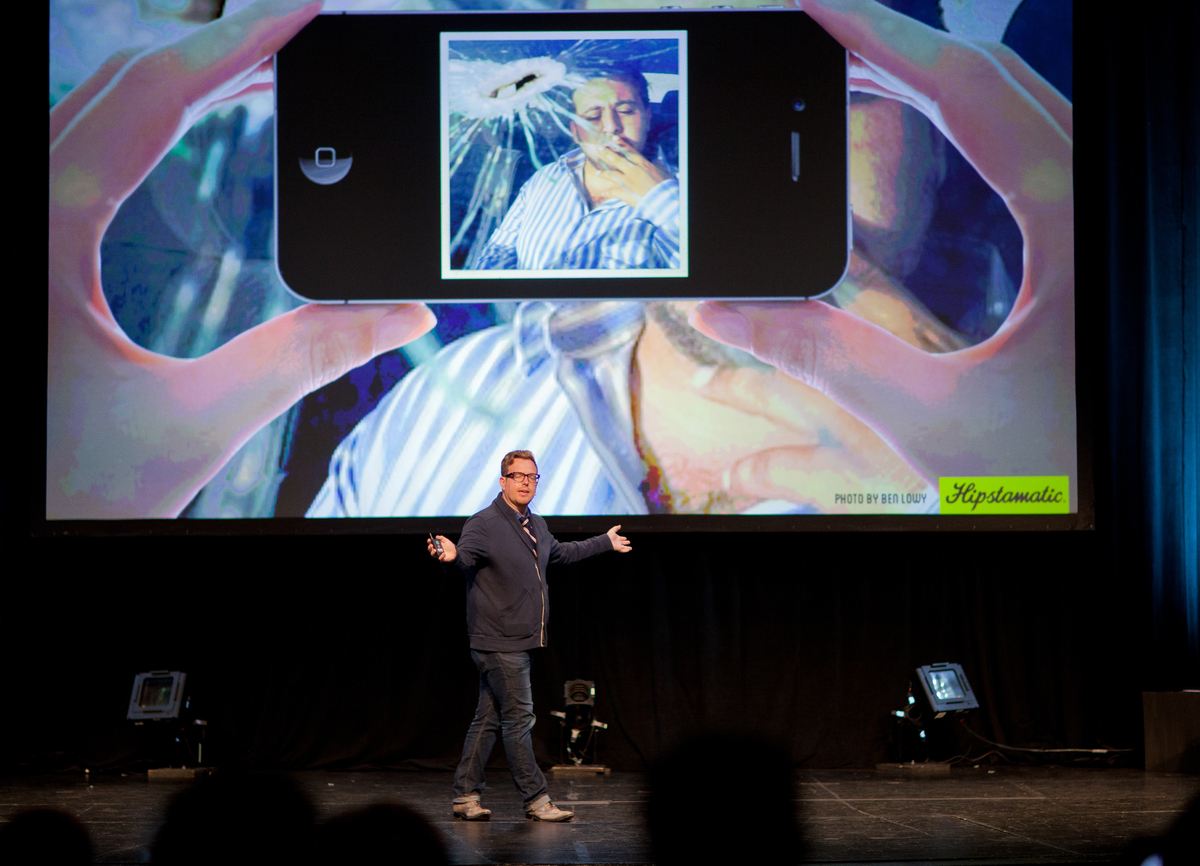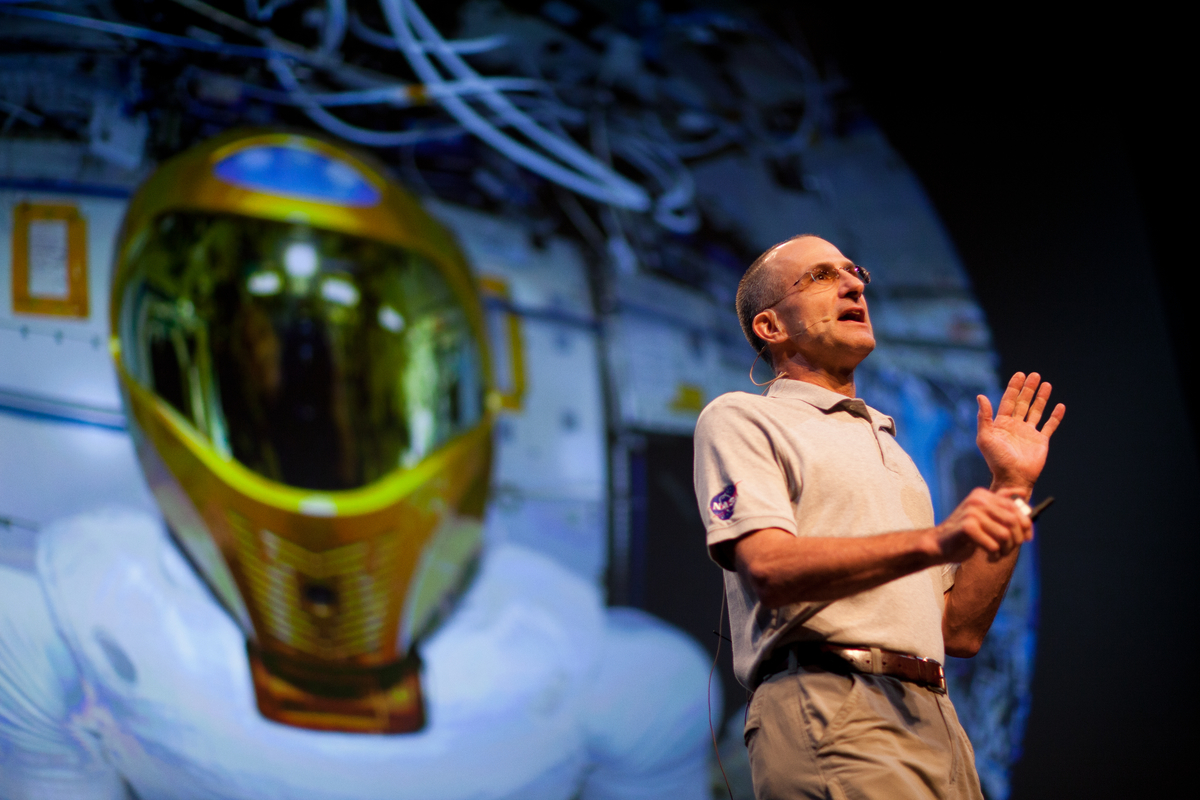
Cory West, engineering manager for Facebook photos started off the second morning session with a discussion about social photography.
Some time back he was interested in the relationship between memory and quality of life. After coming across various articles about the way that we remember things (it turns out that as a result of having instant access to information, we’ve begun to optimize our memories by not remembering facts in order to better remember how to FIND facts), he decided to do a social experiment with his photos.

He photographed 7,000 photos at 27 different social events and posted 950 curated shots on Facebook. He received 880 incidents of participation on 400 of the 950 posted photos. What he found surprising was that 55 percent of the activity was from people he didn’t know.
When he looked at the data, the numbers did make sense, as he had many more friends of friends than friends in his network. But he also realized that social activity around the posted photos was allowing for people to reestablish some of the secondary social cues that begin to feel lost in the digital age.
The conclusion form his experiment? Even though he has no scientific evidence, he believes that social photography absolutely does make our lives better.
Lucas Buick, co-founder and CEO of Hipstamatic spoke about how the popular photography app came to be. They originally aimed to create a toy camera and were “completely blown away” when they saw Hipstamatic photos on the cover of the New York Times.

Although they didn’t intend for the app to get the wide use that it has (it was just something to share with friends originally), he said that it makes sense to him that it has. Every two minutes we snap as many photos as humanity as a whole took in the 1800s, he reminded us. There is room for people who want to take photos with lots of heavy equipment and there’s room for people who choose to use a smart phone.
As Buick sees it, Hipstamatic helps, “bring the fun back to photography.” “You shouldn’t have to work so hard,” he told the audience.
Finally, he did let slip that there would be a new update rolling out next week with something they’ve had on their white board for a long time–multiple exposure.
The final speaker of the morning was Dr. Donald Pettit, NASA astronaut. Dr. Pettit spoke about a new frontier of photography that few people have had experience with: space. Dr. Pettit has had three opportunities to photograph from space.
He told us about some of the differences of shooting in this environment. In an antigravity environment, for example, you can shoot people in various positions, like sitting on the ceiling.

He admits that after some time in space, these differences become normal, and some of his photos have been retouched to more closely match earth standards. He put a question to the audience: “What would you do? Would you take pictures like it really happens to be or would you conform to earth standards?” He answered the question with, maybe somewhere in between.
One particular challenge of shooting from space is how quickly the earth goes by when you’re in orbit. In order to take a photo of his hometown, for example, he had between three and five seconds to capture it. If he missed it he would have to wait 11 days to try again. Sunset, which lasts two minutes on earth lasts about seven seconds in space. As a result, they try to leave their cameras on all the time so they don’t miss important shots.
Another challenge–that no one yet has an explanation for–is that hard drives fail much more often in space. So they do their best to downlink images as often as possible.
He concluded telling the audience that space is a frontier, photography is a wonderful medium to record scientific data, and it’s also a wonderful medium to record the experience.
Check out the full list of speakers and agenda on the Luminance website. See highlights and photos from each session of the conference on our blog.

